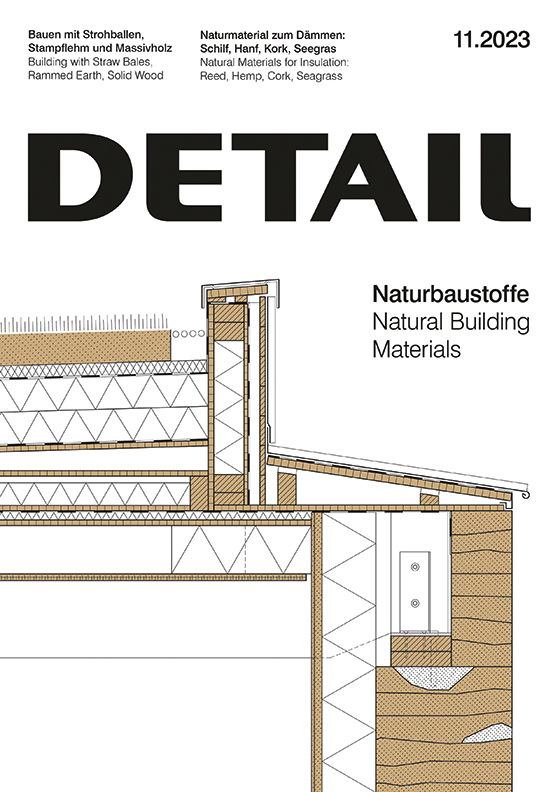Скачать pdf версия для просмотра
From the editorial DETAIL 11.2023
Straw, Clay, and Other Natural Building Materials
In the last decade, timber construction has rapidly gained ground in the building industry, becoming common even in metropolitan areas. As building with wood becomes more popular, interest is growing in other eco-friendly natural materials, like straw, cork, and clay. These resources are often locally available and can be composted and reintegrated into the material cycle once their lifecycle ends.
Although building with natural materials may not always be the cheapest option, their low grey energy consumption, ease of deconstruction, and minimal environmental footprint make a compelling argument in their favour.
In this issue, we present exemplary projects that highlight the extensive use of natural building materials. Using timber sourced from local forests, clay from regional clay pits, and cork acoustic panels, FAZ architectes prioritized the creation of a healthy indoor environment at a primary school in Riaz near Geneva.
Meanwhile, in Nänikon near Zurich, Atelier Schmidt adopted straw bale architecture for a housing estate consisting of 28 units distributed across three rows, all in timber frame construction. The 75 cm thick straw insulation layer is concealed beneath the plaster surfaces, and is comparable to the thermal conductivity of rock wool, despite being an agricultural by product. An in-depth exploration of the diversity and properties of plant-based insulating materials, such as hemp, reed, jute, and cellulose, is provided in our Technology feature by Bettina Rühm (page 78).
Ever more bold developers are embracing the use of natural and health-conscious materials in their projects, like the Auenweide housing estate by Einzueins Architektur in Lower Austria.
Perhaps this marks the start of a trend that will shape the future.
Страна: Германия
Язык: немецкий/английский
Издатель:
Периодичность: 10 выпусков в год+ 2 Detail Green + 2 Special

